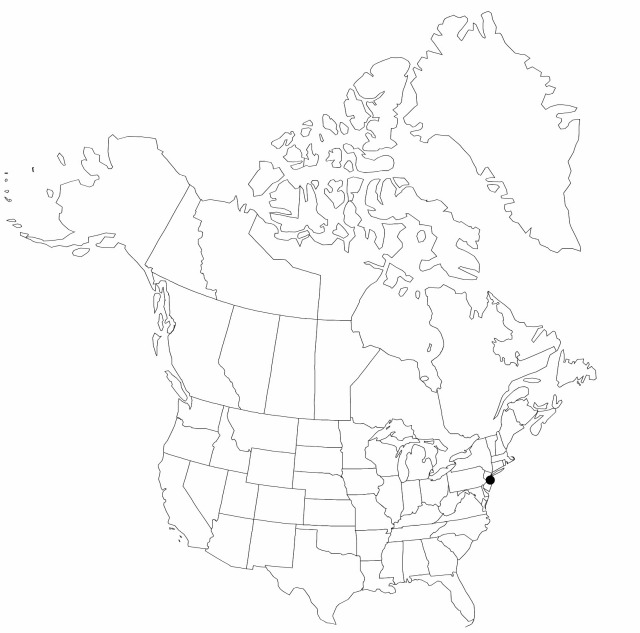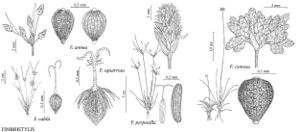Fimbristylis squarrosa
Enum. Pl. 2: 289. 1805.
Plants annual, cespitose, delicate, to 30 (–40) cm, bases soft; rhizomes absent. Leaves polystichous, spreading to ascending, to 1/2 length of culms or longer; sheaths entire or ciliate distally, backs hirtellous; ligule absent; blades linearfiliform, 0.5 mm wide, flat or involute, scabridciliate, often abaxially hirtellous. Inflorescences: anthelae simple or compound, mostly open, ascending-branched, mostly longer than broad; scapes filiform, 0.5 mm wide, distally compressed, mostly glabrous; longer involucral-bracts leafy, equaling or exceeded by anthela. Spikelets greenish brown or brownish, lanceoloid or narrowly ellipsoid-cylindric, 4–5 mm; fertile scales ovate, acute, glabrous, midrib excurrent as slender, excurved cusp. Flowers: stamens 1; styles 2-fid, slender, base flat, long-fimbriate, hairs recurved over achene summit. Achenes pale-brown, lenticular, obovoid, 0.9 mm, smooth or very finely reticulate.
Habitat: Moist sands or silts, low clearings, fields
Elevation: low to high elevations
Distribution

Introduced; N.J., West Indies (Cuba), Central America (Honduras), South America, Asia, Africa, Indian Ocean Islands, Pacific Islands
Discussion
Fimbristylis squarrosa is an Old World temperate to tropical weed, mostly of Asia and Africa.
While Fimbristylis squarrosa has been collected only once in North America from ballast at Camden, New Jersey (C. F. Parker, in 1865), the weedy and often ruderal nature of the species makes it a likely future adventive.
Selected References
None.
Lower Taxa
"shortened" is not a number."lengthofculms" is not declared as a valid unit of measurement for this property. "/2lengthofculms" is not declared as a valid unit of measurement for this property.
